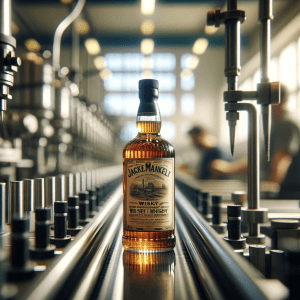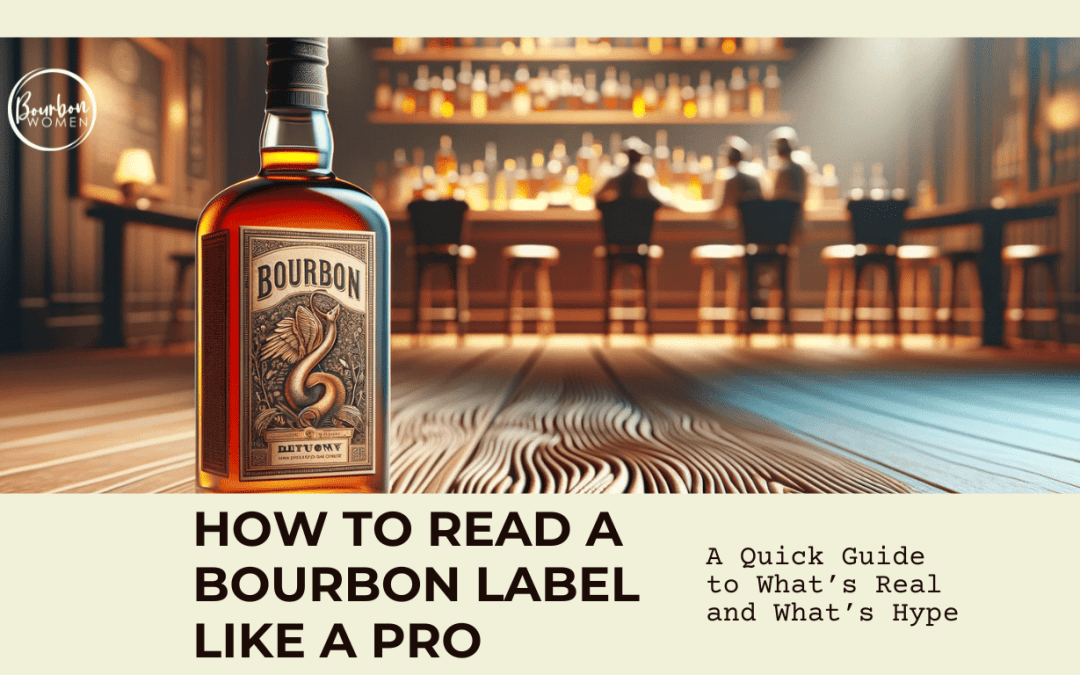Learning how to read a bourbon label like a pro isn’t hard – you just need to know a few tips and tricks to understand what the label is REALLY saying. It’s true – we love bourbon and many whiskies, but whiskey labels can be full of color, hype and numbers without telling you the whole story. Here are some key things to remember to read a whiskey label like a pro.
What Does Age Statement Mean on a Bourbon Bottle?
If the number says “years” after it on the label, then yes. However, if it’s a brand that has a number on the bottle (with out years or years old) chances are it’s a younger whiskey than any unaccompanied number on the front. If the word “ancient” or “old” is used, these terms are meaningless on a label. Remember the basic rules for labeling bourbon and whiskies in the US:
- Any age statement on the bottle refers to the youngest bourbon or whiskey in the bottle. If a bottle has a batch of 5, 6 and 7 year old barrels with a single 4 year old barrel, the bottle must be labeled with 4 years old if an age statement is used on it.
- If a barrel included in the batch is less than 4 years old, it must include an age statement on the label of the youngest bourbon in the batch.
- Any bourbon or whiskey produced in the US can be labeled “straight” if it is aged at least 2 years.

What Does Straight Bourbon (or Rye Whiskey) Mean on a Whiskey Label
The designation straight on a label has a very specific meaning. Straight means the product is at least 2 years old.
The Difference between “Distilled By” vs “Distilled In”
Making bourbon and whiskey takes lots of time and lots of money. Some brands, rather than making their own spirit, aging, bottling and selling it, have a different model. They purchase bourbon from suppliers. In the bourbon world this is sometimes referred to as “sourced” bourbon or whiskey.
- If you read “distilled by” on a label, the brand is making the spirit, aging it and bottling it.
- If you read “distilled in” on a label, the brand is sourcing the spirit.
- Keep in mind a huge amount of today’s great whiskies and bourbon are sourced products, and the artistry of aging, selecting and batching of products is no less an art than making great spirits to begin with.

Sweet Mash vs Sour Mash
- If the label refers to sour mash, the bourbon is produced by the typical bourbon manufacturing process, where backset (fermented mash from previous batches) is used to help maintain a consistent pH level in the mash..
- The sweet mash process uses a completely fresh set of ingredients for each batch. No materials from any previous batch are used. This process is more expensive, as it requires extensive cleaning between fermentation batches, and takes more time, but can provide greater control of consistency of product when the production environment is reset to zero each time a mash is made.
Finished In/Secondary Aging
Many brands choose to finish their bourbon in a second barrel for additional aging. There are strict labeling requirements for this.
- Any bourbon finished in a secondary barrel or with secondary staves must be labeled as such. The word bourbon can be used, but it must be labeled as finished on the front of the label. For example Angels Envy bourbon is labeled as “Bourbon Finished in Port Barrels.”
- If the second barrel is a used barrel or a non-oak barrel, it cannot be labeled solely as bourbon, but may be referred to as “bourbon finished in X barrels.”
What Does Bottled in Bond mean on a Whiskey Label?
Bourbons labeled Bottled in Bond have very specific standards they have to meet. It might be considered the very first food safety act in the US. It was developed to keep consumers safe from poisonous additives added to low quality distilled spirits before the country had regulations on what could be considered whiskey. The whiskey must be:
- Bottled at 100 proof.
- Aged for at least 4 years.
- Made at one distillery.
- Made in one season.
Other Words You’ll See
- Single-barrel or single-cask means that the whiskey in the bottle is from a single barrel, and not married with whiskey from any other barrels.
- Small batch has no legal meaning. It just designates that the batch is smaller than their largest batch. Batches can be as tiny as two barrels or number in the hundreds of barrels.
Some Caveats on Reading Bourbon Labels
- The brand name can’t be intentionally misleading. For example something called Bourbon can’t be made with 51% rye grain, or flavored, and can’t be made in another country.
- There’s no such thing as flavored bourbon. If there is flavoring added, it’s not a bourbon.

About Labels of non-Bourbon Whiskies
- To be labeled Rye whiskey, the whiskey must be at least 51% by mashbill.
- To be labeled Wheat whiskey, the whiskey must be at least 51% wheat by mashbill.
- To be designated Corn whiskey, the whiskey must be at least 80% corn by mashbill.
- Any American whiskey can be designated straight if it is aged at least 2 years.
In Conclusion
Take a few minutes before you take that next bottle of bourbon home and make sure you’ve got what you think in your hand. We like to say a pretty bottle might get me to buy it the first time, but if the whiskey isn’t great, we won’t be buying it again.

